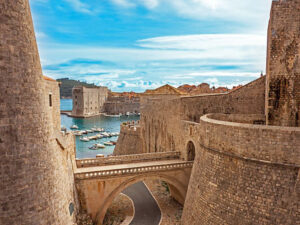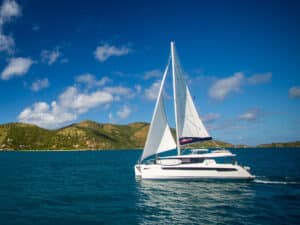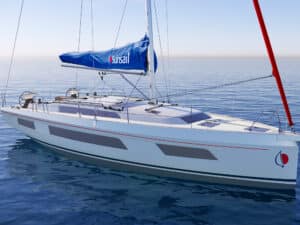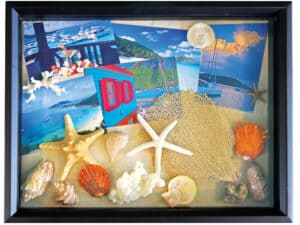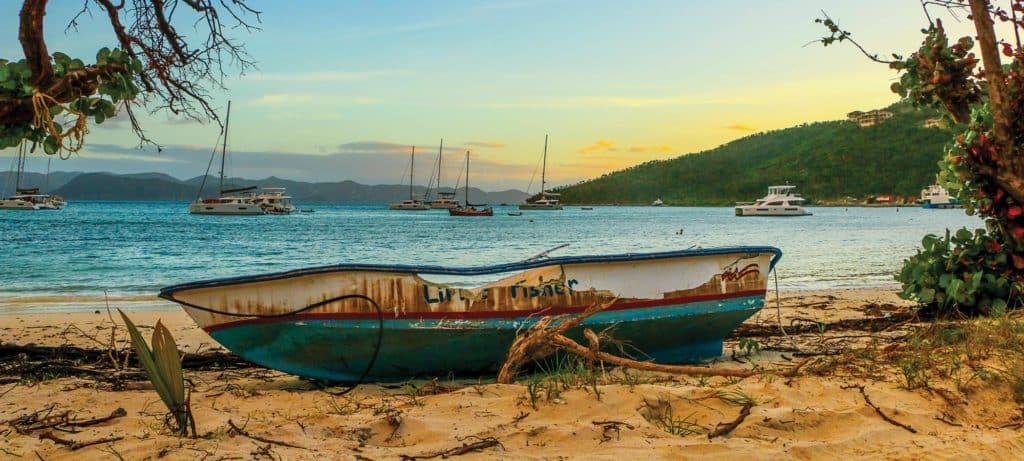
In the British Virgin Islands, the people, boats, roads, houses and cars were not the only things torn asunder and sent into serious disarray by the one-two punch of powerful hurricanes Irma and Maria in fall 2017. So were the trees. In the immediate aftermath of the treacherous storms last September, the hills were literally denuded of all foliage, as barren and fallow as could be. Then, about a month later, a tiny miracle started to occur. What was once stripped and stark suddenly began to sprout back to life. When our charter party — my girlfriend, Sasha, my colleague Parker Stair and his wife, Karen — arrived almost three months to the day after the eye of the storm passed over Tortola, carrying reported gusts of 280 knots and wreaking unimaginable havoc, the hills were again truly lush and green. It was remarkable. As one islander put it so succinctly, “Whatever was made by man was destroyed. Whatever happens in nature has already begun to return.” And when we arrived at the base of the Sunsail and Moorings charter operations on Tortola’s Wickham’s Cay on December 9, the day they reopened for business after a hiatus due to the damage from the storms, the docks were beginning to bustle. As with the sprigs on those hillside forests, a semblance of order was being restored.
Make no mistake about it, the hurricanes ravaged the BVI. Though a quarter of a year had passed since the tempests ripped through the islands, the bays and coastline of Tortola were still littered with smashed boats. On our taxi ride to Road Town after landing at the airport on Beef Island — sharing the cab with an insurance adjuster from New Jersey who had months of work ahead of him — everywhere we saw scores of masts tilted at crazy angles, resembling so many pick-up sticks. Rows of boats were toppled like fallen dominoes. The asphalt had been torn from the roads, which were still a holy mess. Not all power had been restored to the island, and linemen were everywhere.
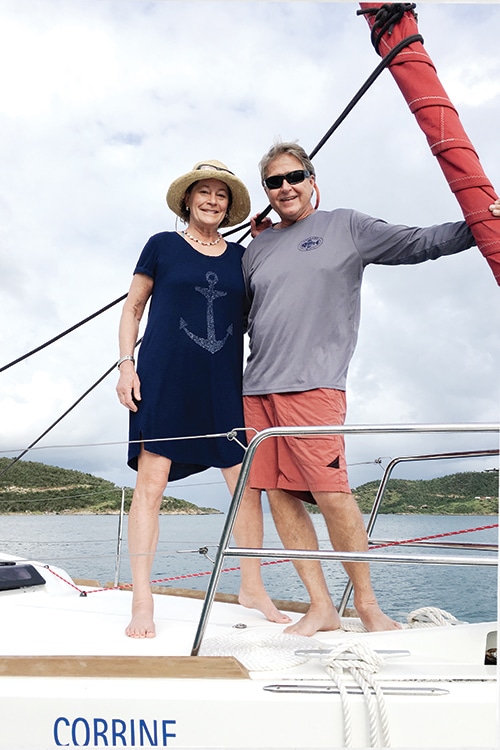
The Sunsail base, however, for the most part was once again a going concern. We’d chartered a Sunsail 41 for the week and, upon arriving, saw a whole dock full of brand-new boats lined up and freshly delivered from France, including ours. It was so new, in fact, that it had yet to be christened with a name. For the time being, at least, its handle was simply Hull 311. Poetic.
I’ve chartered in the BVI on several occasions and almost always went counterclockwise on my trips, heading first to Virgin Gorda, then up to Anegada before working my way back to Jost Van Dyke and on to the other islands. But after conferring with Sunsail’s Josie Tucci, who’d just spent a week on a reconnaissance mission through the chain, we decided to forgo Anegada on this journey and take a clockwise spin through the isles, starting with Jost and then working our way back around to Tortola. It promised to be a pretty mellow itinerary, with lots of time for swimming, snorkeling and kicking back.
With that, propelled by beautiful northeast winds of around 15 knots, we set out from Road Town and reached down the Sir Francis Drake Channel — which we had to ourselves with the exception of a handful of boats — through the pass at Soper’s Hole and into Great Harbour on Jost Van Dyke, where we were one of exactly two yachts.
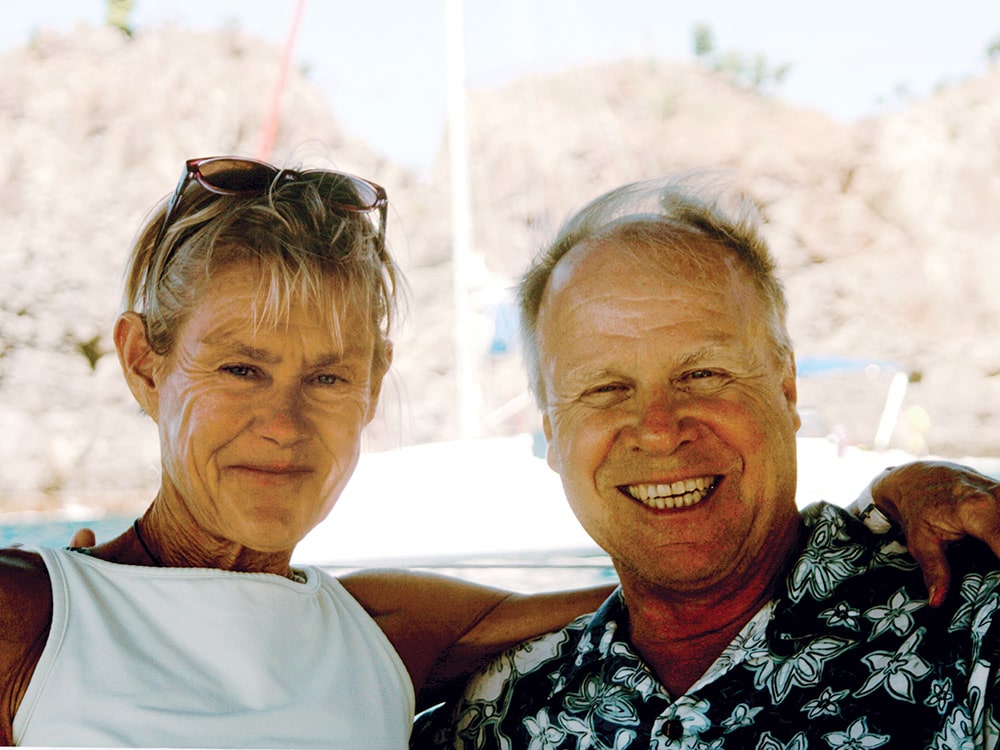
It was like a surreal step back in time to another era altogether, to the way it once was. The land may well have been savaged, and the lack of company was a pleasant but strange sensation, but the fundamental attractions — deep blue seas and a glorious breeze — were precisely the same as they ever were.
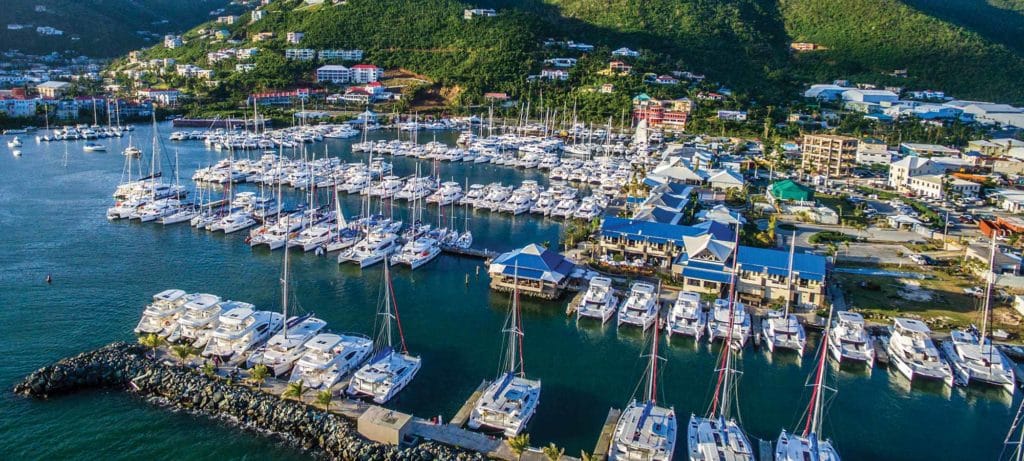
Josie had recommended a dinghy ride over to White Bay — the Soggy Dollar Bar had just resumed operations, one of several watering holes dotted through the islands that were once again open for business — but after a pleasant swim and a lazy lunch, the afternoon was moving along, so we decided to head straight in to the one and only Foxy’s.
Boats, cars, people and homes weren’t the only things disrupted. So were the trees.
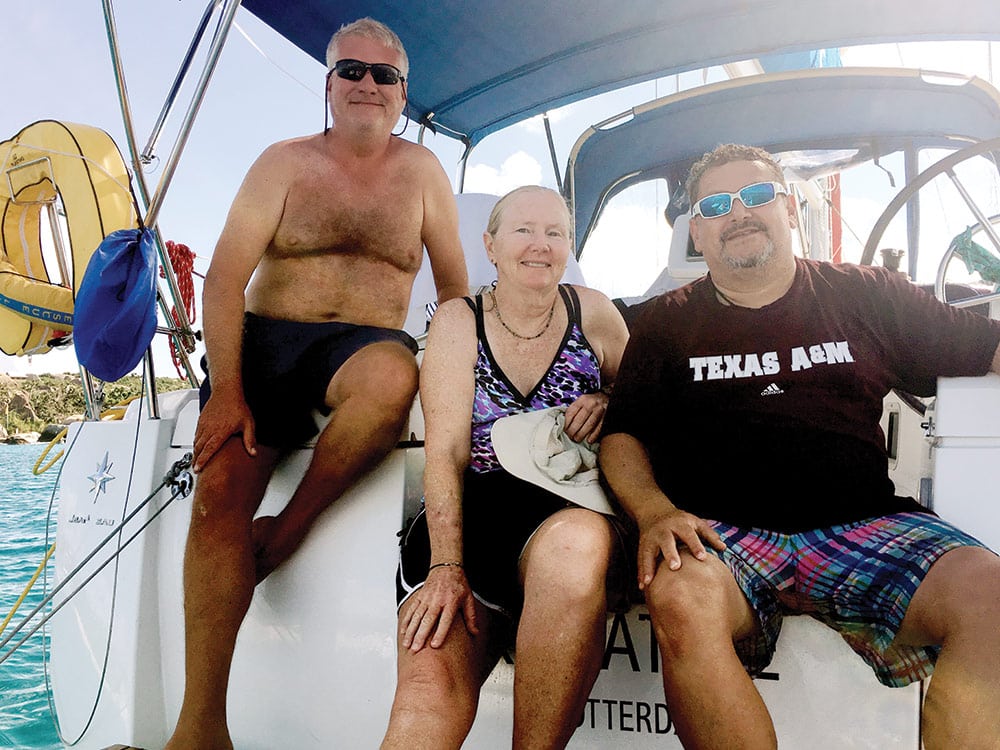
Over a cold Carib beer, the bartender, a smiling chap named Darren, said Foxy’s had opened up about six weeks earlier. “We had some damage, but we’re coming back, bit by bit,” he said. “It was just beers and burgers at first, but we’re getting back to normal now.”
At the other end of the bar was a young couple named Dave and Ally, from the Pacific Seacraft 31 Ally Oop, so dubbed after Ally’s childhood nickname. They were aboard the other boat in the anchorage. After leaving Florida, they’d sailed as far south as Grenada and were working their way back to the States. They’d bypassed the BVI on their way down and were startled to learn that Great Harbour would usually be bursting at the seams on a Sunday afternoon in December. “I guess that’s what all those mooring balls are for,” said Dave.
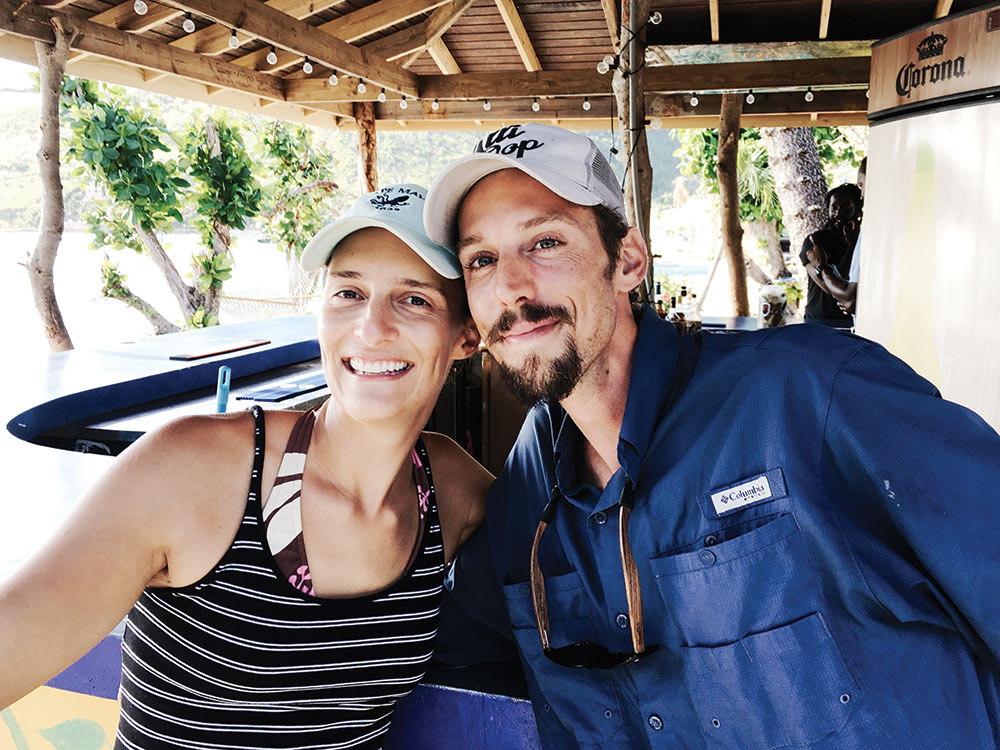
Then, lo and behold, the famous Foxy himself appeared out of nowhere, sipping from a glass of red wine. Asked about Irma, he said: “My shirt stayed dry, and so did my blanket. We had a little damage, but it was from Mother Nature. I feel better knowing it was from Mother Nature and not from man.”
He picked up a guitar, and all of a sudden, we were treated to a private concert, including a song he’d written about Irma. “We are not insane, we just went through a Category 5 hurricane!” the lyrics began. The remainder of the tune is not suitable for a family magazine.
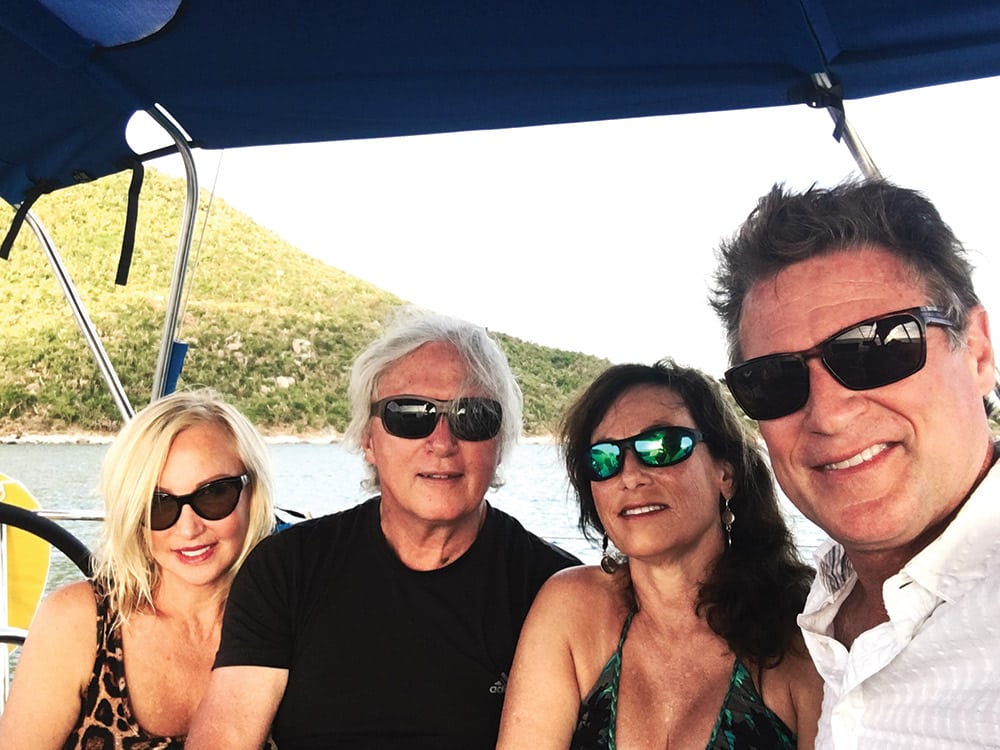
The next day, having enjoyed a quiet dinner aboard, we set sail from Jost, bound for Tortola’s Trellis Bay, stopping first at White Bay on Guana Island. There, we picked up a mooring for a swim and snorkel, then took the dinghy around Monkey Point for another dip and a stroll down the sandy beach. Our footprints were the only ones there.
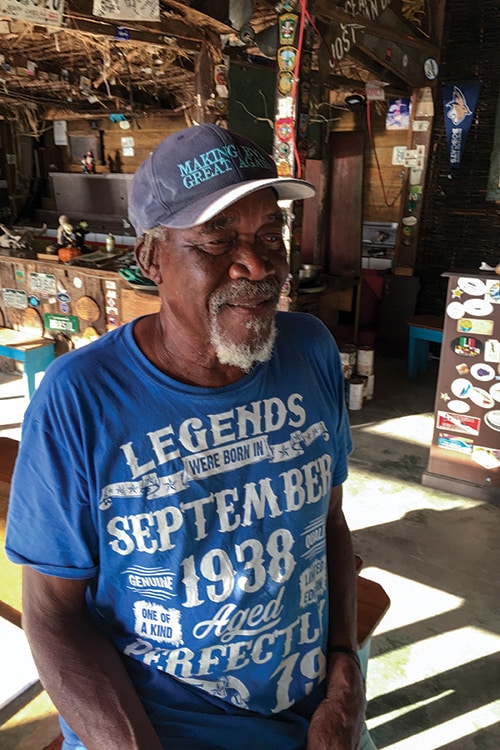
At White Bay, we were again joined by a single boat, this one another Sunsail charter vessel, a 47-footer called White Knight, sailed by San Diegans David Richards and Christine Haws. I took the dinghy over to say hello. The couple actually owned a sistership to the boat they were chartering, which they keep in the Sunsail fleet and which had been damaged (but was repairable) in the storm. It was around their eighth trip to the BVI, which they generally visit twice a year, and I was interested in their take on the post-Irma islands.
“All the locals are so upbeat,” said Christine. “Everyone’s been so positive. I’m so impressed with their attitude. Everybody is so friendly and warm. The sentiment seems to be, ‘I’m still alive, I’ve still got my health, everything’s going to be all right.’ It’s been different from our other trips. It’s been such a pleasant experience.”
“It’s the first time we’ve ever been able to pick up a mooring ball here. It’s usually so crowded,” said David. “Same with the Dogs and the Indians. A lot of folks come to the BVI and they’re basically on a pub crawl from one beach bar to another. This is a different pace. If you like to sail or fish, it’s still all here.”
“I actually like it better like this,” added Christine. “It’s quieter. The islands and the water are still spectacular. You can’t beat the BVI under any circumstances. But look at that view …” she said, her voice trailing off. There was really nothing left to say.
Later that afternoon, we pulled into Trellis Bay, the sight of which was sobering — its rim was strewn with high, dry, broken boats. According to a local sailor, one giant wave rolled into the anchorage and wiped out everything in sight. We spent the evening on the boat, and the next morning we went ashore and were able to get ice at the recently reopened market, which we gained access to when the guys rebuilding the wrecked docks laid out a plank for us to cross. Even under the unusual circumstances, chivalry remained alive and well in the BVI.
En route to Virgin Gorda later that day, we pulled in for lunch at Great Dog island, part of the National Park Trust and the largest of one of several little isles that constitute a group collectively called the Dogs. On its west side were a smattering of park moorings, one of which we picked up. The water was clear, flat and inviting, and in a flash, we were all over the side. Continuing the ongoing theme, ours was the only boat in sight.
“Irma was a nasty lady,” said our waitress. “She turned us upside down”
Irma wreaked havoc on Virgin Gorda, with North Sound taking a devastating hit. Among the many establishments that were creamed by the storm was the popular Bitter End Yacht Club, a resort destination popular with sailors and vacationers alike. Frankly, I’d seen pictures of the place in the aftermath of Irma, and I couldn’t bring myself to head up the sound to have a look. Instead, we pulled into protected Leverick Bay, just inside the entrance to North Sound. Though it wasn’t as widespread as the Bitter End’s, the damage at the well-known resort there was severe, but it was slowly being repaired. The Restaurant at Leverick Bay, for instance, was once a two-story building with a terraced dining area on the second floor and an informal place called the Cove and Beach Bar on the first. Thanks to Irma, the upstairs venue was long and totally gone, but the beach bar, where we pulled up for dinner, had recently opened. As we did most everywhere, we asked our pleasant waitress about Irma. “She was a nasty woman,” she said. “She took this little country and turned it upside down. We have come a long way, a long way.”
At the next table over were Kate Supplee and Rich Hamma, a couple from Missoula, Montana. The following morning, I rolled over to their boat, Corrine, a Sunsail 41, to say hi. Kate explained that the boat, which they also kept in the company’s charter fleet, was named after her mom, who brought the family down to the BVI when she was a kid on family vacations. “We’re sort of re-creating those,” she said.
They’d purchased their boat three years earlier, and remarkably, it had weathered the storms right on Sunsail’s docks. “We were very, very lucky,” she said.
When they bought Corrine, they figured they’d use their ownership privileges to visit other venues, such as those in the South Pacific. But they kept coming back to the BVI. “Now that we own a boat, it makes the BVI even more special,” said Kate. “We bring our friends. We’ve been here so many times, we feel really comfortable.”
After the hurricanes, through Facebook, the couple found a place to donate money to support a local family. They’d had lunch with them at the base after they arrived.
“When you ask people what they went through, some of them don’t want to talk about it and others open up,” said Rich. At the restaurant on the top of the well-known Baths on Virgin Gorda, he said, the shopkeeper had a tear in her eye when she remarked, “It’s so nice to have you back.”
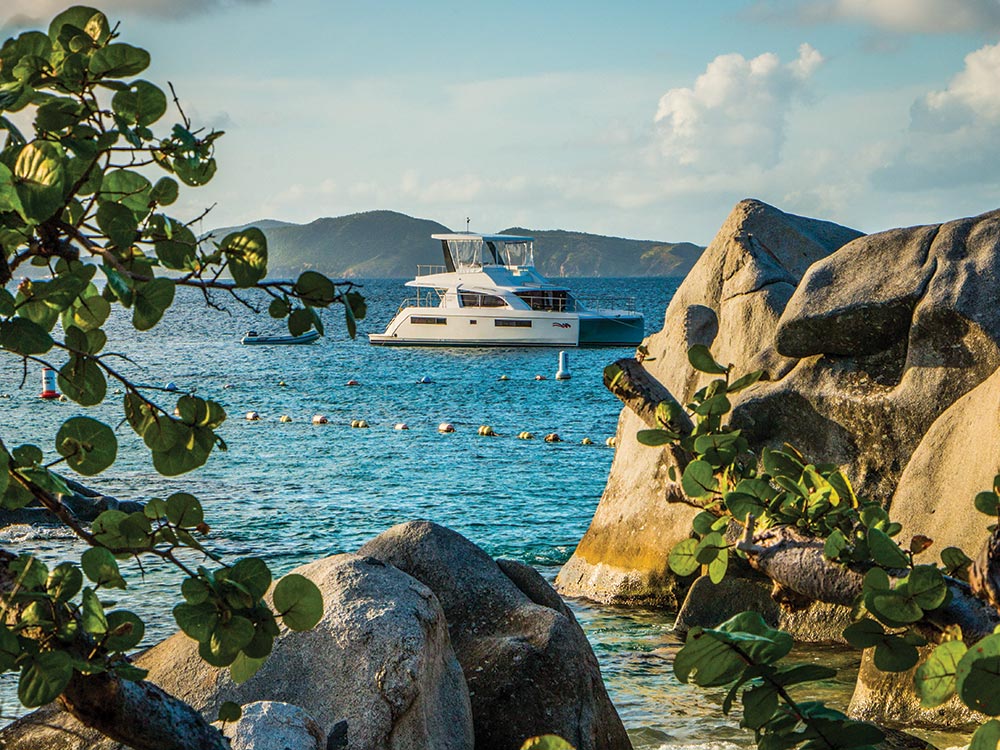
The Baths were also our next destination, and as we washed up ashore there after a swim and a snorkel, we were greeted by a fellow named Jason, who was running the beach bar. He said the beach and the grottoes had been thrashed in the storm — “the freshwater runoff from the rain took everything out, then the sea brought it back in” — but by the time we arrived, it was all in pristine condition, having been painstakingly restored by the locals. “This is the most boats we’ve seen since,” he said, waving at the dozen yachts hanging off the park moorings. “We’re coming back.”
We had a nice wander through the paths and rocks to the beach on Devil’s Bay, which was stunning, as beautiful as could be. Sasha and I swam back to the boat, and once there, we found we were parked next to a yacht flying a Texas flag, which we’d seen several times in our travels. Curious, I took the dinghy over to ask about their trip.
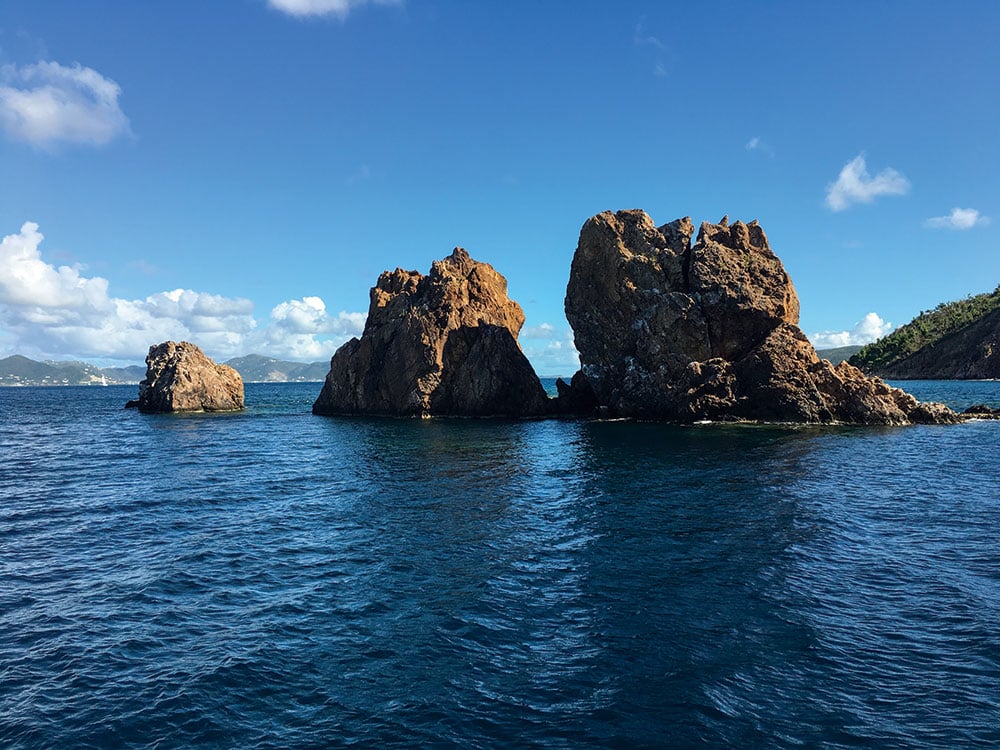
It turned out that their Sunsail 41, Kidzatzee, was part of a three-boat flotilla from a sailing club in Galveston that came to the islands every year. Capt. Terry Grover, an American Sailing Association instructor who was teaching an onboard class to his three-person crew, said he didn’t mind the relative dearth of shoreside attractions.
“You’ve got the boat, you’ve got your provisions, what else do you need?” he said.
Grover also explained that because of the hurricanes, they’d considered chartering in the Grenadines but ultimately decided to return to the BVI. “We wanted to support the people of the BVI,” he said. It wasn’t the first time we’d heard that sentiment.
From the Baths we made the short motor over to Colliston Point, picked up a mooring, and dinghied ashore to the docks at Spanish Town’s Virgin Gorda Yacht Services, where the damage was also clearly extensive. We were off to a restaurant called Coco Maya, an Asian-fusion place on the beach that had been universally recommended by just about everyone. Coco Maya was as good as advertised. Aaron, the Kiwi owner, said the structure, with the exception of some snapped wire rigging that kept the place upright, was practically unscathed. “We were incredibly lucky,” he said, touching one of the wooden bar stools.
The zigzagging stars from the Geminids meteor shower put an end to a terrific day.
As it was Parker and Karen’s 30th anniversary, Sasha and I repaired to the bar so the lovebirds could have their own private table. Looking out at the palm trees, the open-air layout and the gleaming beach, Sasha said, “This reminds me of Hawaii.” It was certainly out of this world. And so were the zigzagging stars overhead from the Geminids meteor shower we took in afterward, back on trusty Hull 311. It was a pretty perfect end to a terrific day.
With time running out on our trip, the next morning found us reaching back down Sir Francis Drake Channel in a gentle southeasterly, bound for the Bight on Norman Island. Once there, we were confronted with one last glimpse of destruction, but only one: High and dry along the foreshore rested the remains of the famous (or is it infamous?) floating bar called William Thornton, aka Willie T. Many a rollicking evening was spent there by just about everyone who’s chartered in the BVI. If only a wreck could talk.
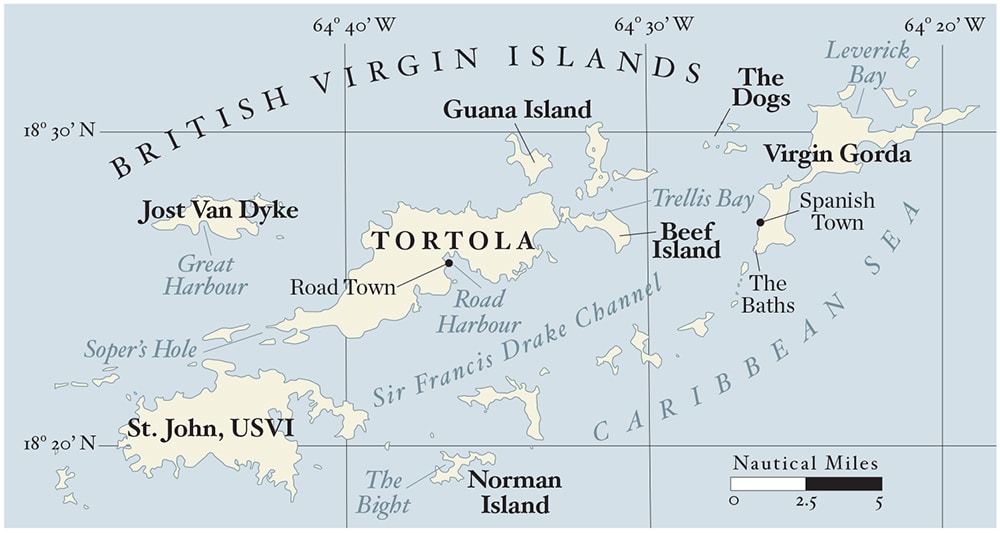
The last time I was in the Bight, I picked up the very last available mooring in the chock-a-block harbor, but this time there were literally dozens from which to choose because we shared the place with just another 10 boats. Lunch was a cheeseburger in paradise at the shoreside restaurant called Pirate’s Bight, also freshly opened for visitors. It was perfect.
We had only one last stop on our way back to Road Town, a snorkel at the must-see rock formations known as the Indians, just around the corner from the Bight. There were plenty of moorings available. The wind had come up, so the snorkeling excursion was a little choppy, but it was a fine way to wrap up the festivities.
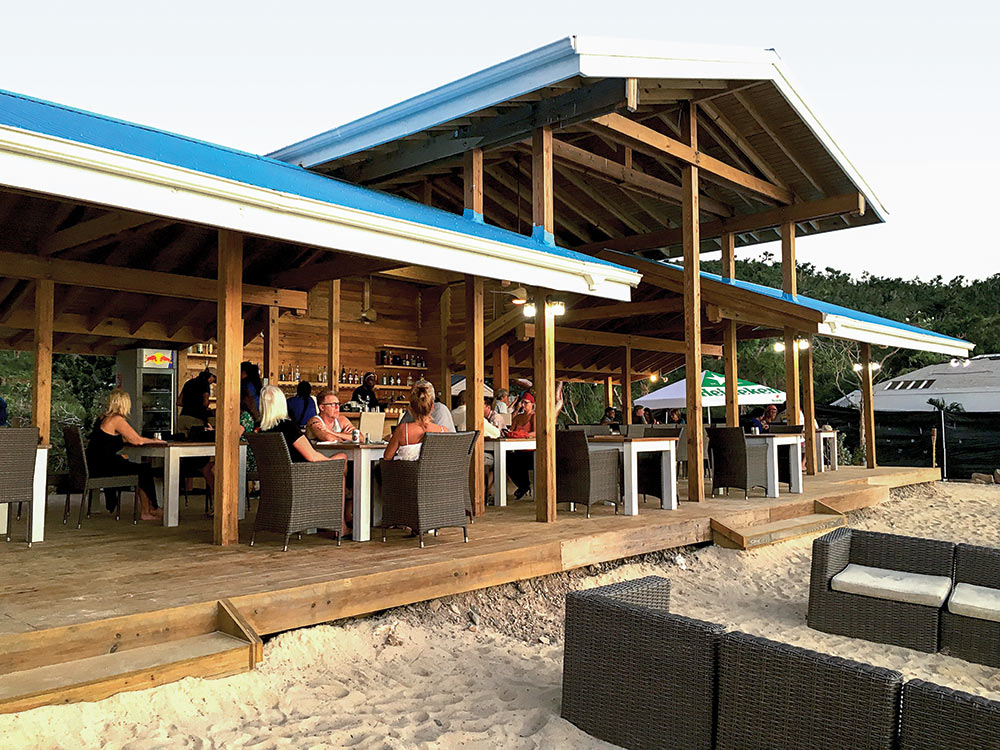
As we closed in on Tortola, once again it was hard not to notice the hillside greenery. After a week of thoroughly enjoying this perennial sailor’s nirvana, we concluded that despite the carnage foisted upon the islands by those historic blows, it was still a pretty good time and place to pay a visit. The trees were not only pretty, they served as a metaphor. Like the budding branches, the BVI was coming back strong.

